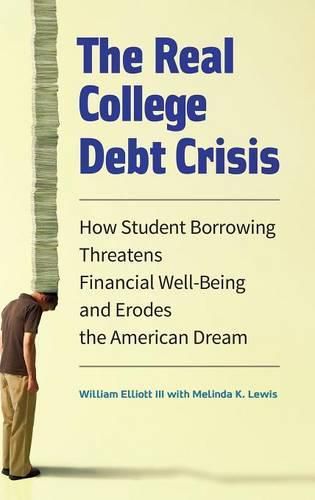Readings Newsletter
Become a Readings Member to make your shopping experience even easier.
Sign in or sign up for free!
You’re not far away from qualifying for FREE standard shipping within Australia
You’ve qualified for FREE standard shipping within Australia
The cart is loading…






Is it still worth it for low-income students to attend college, given the debt incurred? This book provides a new framework for evaluating the financial aid system in America, positing that aid must not only allow access to higher education, but also help students succeed in college and facilitate their financial health post-college.
Higher education plays a critical role in the economy and society of the United States, creating a ladder of economic opportunity for American children, especially for those in poverty. Unfortunately, higher education today increasingly reinforces patterns of relative privilege, particularly as students without the benefit of affluent parents rely more and more on student loans to finance college access. This book presents penetrating new information about the fiscal realities of the current debt-based college loan system and raises tough questions about the extent to which student loans can be a viable way to facilitate equitable access to higher education.
The book opens with relevant parts of the life stories of two students-one who grew up poor and had to take on high amounts of student debt, and another whose family could offer financial help at critical times. These real-life examples provide invaluable insight into the student debt problem and help make the complex data more understandable. A wide range of readers-from scholars of poverty, social policy, and educational equality to policymakers to practitioners in the fields of student financial aid and financial planning-will find the information in this text invaluable.
Reveals the inadequacy of the scope of the current educational and economic policy debates, including moves to funnel low-income children toward two-year degrees, structure alternative debt repayment schedules, and constrain increases in college tuition
Answers the question: Does the student who goes to college and graduates but has outstanding student debt achieve similar financial outcomes to the student who graduates from college without student debt?
Examines an important subject of interest to educators, students, and general readers that is related to the larger topics of education, economics, social problems, social policy, public policy, debt, and asset building
Provides empirical evidence and theoretical support for a fundamental shift in U.S. financial aid policy, from debt dependence to asset empowerment, including an explanation of how institutional facilitation makes Children’s Savings Accounts potentially potent levers for children’s educational attainment and economic well-being, before, during, and after college
$9.00 standard shipping within Australia
FREE standard shipping within Australia for orders over $100.00
Express & International shipping calculated at checkout
Is it still worth it for low-income students to attend college, given the debt incurred? This book provides a new framework for evaluating the financial aid system in America, positing that aid must not only allow access to higher education, but also help students succeed in college and facilitate their financial health post-college.
Higher education plays a critical role in the economy and society of the United States, creating a ladder of economic opportunity for American children, especially for those in poverty. Unfortunately, higher education today increasingly reinforces patterns of relative privilege, particularly as students without the benefit of affluent parents rely more and more on student loans to finance college access. This book presents penetrating new information about the fiscal realities of the current debt-based college loan system and raises tough questions about the extent to which student loans can be a viable way to facilitate equitable access to higher education.
The book opens with relevant parts of the life stories of two students-one who grew up poor and had to take on high amounts of student debt, and another whose family could offer financial help at critical times. These real-life examples provide invaluable insight into the student debt problem and help make the complex data more understandable. A wide range of readers-from scholars of poverty, social policy, and educational equality to policymakers to practitioners in the fields of student financial aid and financial planning-will find the information in this text invaluable.
Reveals the inadequacy of the scope of the current educational and economic policy debates, including moves to funnel low-income children toward two-year degrees, structure alternative debt repayment schedules, and constrain increases in college tuition
Answers the question: Does the student who goes to college and graduates but has outstanding student debt achieve similar financial outcomes to the student who graduates from college without student debt?
Examines an important subject of interest to educators, students, and general readers that is related to the larger topics of education, economics, social problems, social policy, public policy, debt, and asset building
Provides empirical evidence and theoretical support for a fundamental shift in U.S. financial aid policy, from debt dependence to asset empowerment, including an explanation of how institutional facilitation makes Children’s Savings Accounts potentially potent levers for children’s educational attainment and economic well-being, before, during, and after college